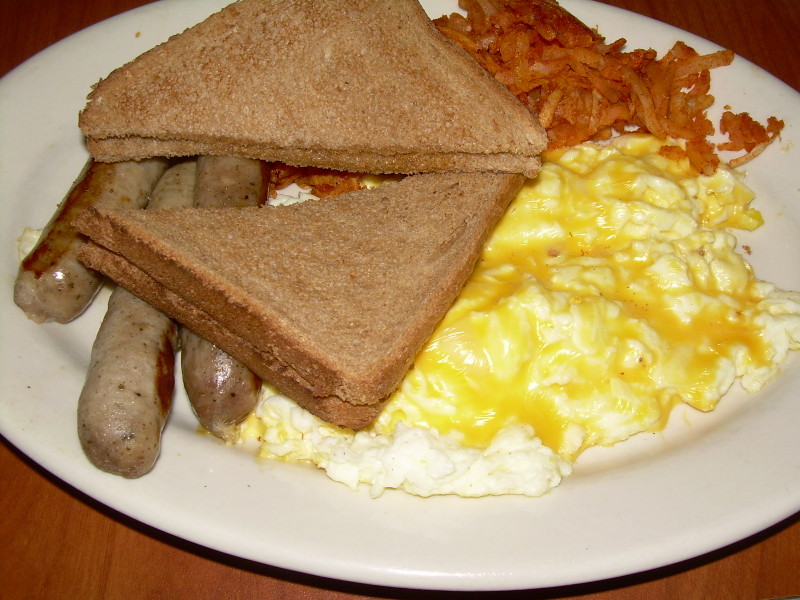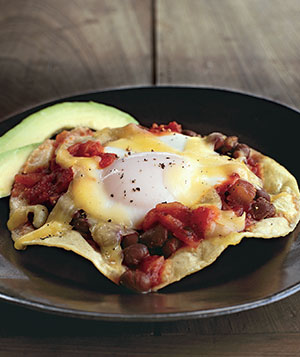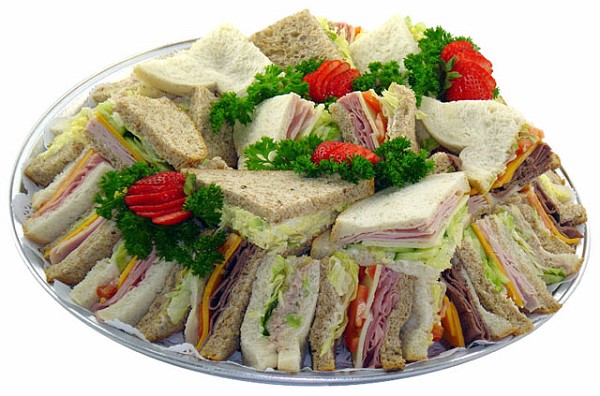~ Hall of Heroes ~ Lt. Cdr. Edward "Butch" O'Hare Info from here. |
|
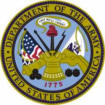  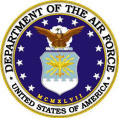 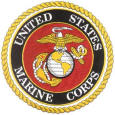  |
Edward Henry Butch O'Hare was born in St. Louis, Missouri to Edward Joseph O'Hare and Selma O'Hare. Butch had two sisters, Patricia and Marilyn. When their parents divorced in 1927, Butch and his sisters stayed with their mother Selma in St. Louis while their father Edward moved to Chicago. Butch's father was a lawyer who 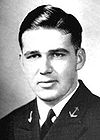 worked closely with Al Capone before turning against him and helping convict Capone of tax evasion. worked closely with Al Capone before turning against him and helping convict Capone of tax evasion.Butch O'Hare graduated from the Western Military Academy in 1932. The following year, he went on to the United States Naval Academy at Annapolis, Maryland. Graduated and appointed an Ensign on June 3, 1937, he served two years on board the battleship USS New Mexico (BB-40). In 1939, he started flight training at NAS Pensacola in Florida, learning the basics on Naval Aircraft Factory N3N-1 "Yellow Peril" and Stearman NS-1 biplane trainers, and later on the advanced SNJ trainer. On the nimble Boeing F4B-4A, he trained in aerobatics 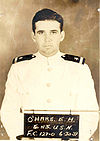 as well as aerial gunnery. He also flew the SBU Corsair and the TBD Devastator. as well as aerial gunnery. He also flew the SBU Corsair and the TBD Devastator. In November 1939, his father was shot, most likely by Al Capone's gunmen. During Capone's tax evasion trial in 1931 and 1932, O'Hare's father provided incriminating evidence which helped finally put Capone away. There is speculation that this was done to ensure that Butch got into the Naval Academy, or to set a good example. Whatever the motivation, the elder O'Hare was shot down in his car, a week before Capone was released from incarceration. When Butch finished his naval aviation training on May 2, 1940, he was assigned to USS Saratoga (CV-3) Fighter Squadron Three (VF-3). O'Hare now trained on the Grumman F3F and then graduated to the Brewster F2A Buffalo. Lieutenant John Thach, then executive officer of VF-3, discovered O'Hare's exceptional flying abilities and closely mentored the promising young pilot. Thach, who would later develop the Thach Weave aerial combat tactic, emphasized gunnery in his training. In 1941, more than half of all VF-3 pilots, including O'Hare, earned the "E" for gunnery excellence. In early 1941, Fighting Squadron Three transferred to USS Enterprise (CV-6), while carrier USS Saratoga (CV-3) underwent maintenance and overhaul work at Bremerton Navy Yard. On Monday morning, July 21, O'Hare made his first flight in a Grumman F4F Wildcat. Following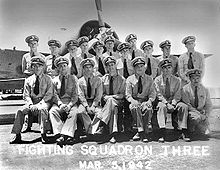 stops in Washington and Dayton, he landed in St. Louis on Tuesday. Visiting the wife of a friend in hospital that afternoon, O'Hare met his future wife, nurse Rita Wooster, proposing to her the first time they met. After O'Hare took instruction in Roman Catholicism to convert, he and Rita married in St. Mary's Catholic Church in Phoenix on Saturday, September 6, 1941. For their honeymoon, they sailed to Hawaii on separate ships, Butch on Saratoga, which had completed modifications at Bremerton, and Rita on the Matson liner Lurline. Butch was called to duty the day after the Japanese attacked Pearl Harbor. stops in Washington and Dayton, he landed in St. Louis on Tuesday. Visiting the wife of a friend in hospital that afternoon, O'Hare met his future wife, nurse Rita Wooster, proposing to her the first time they met. After O'Hare took instruction in Roman Catholicism to convert, he and Rita married in St. Mary's Catholic Church in Phoenix on Saturday, September 6, 1941. For their honeymoon, they sailed to Hawaii on separate ships, Butch on Saratoga, which had completed modifications at Bremerton, and Rita on the Matson liner Lurline. Butch was called to duty the day after the Japanese attacked Pearl Harbor. On Sunday evening, January 11, 1942, as Butch and other VF-3 officers ate dinner in the wardroom, the carrier Saratoga was damaged by a Japanese torpedo hit while patrolling southwest of Hawaii. She spent five months in repair on the west coast, so VF-3 squadron transferred to the USS Lexington (CV-2) on January 31. |
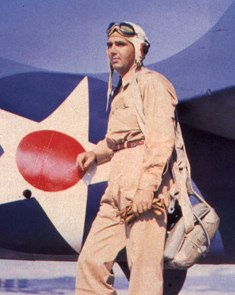 O'Hare's most famous flight occurred during the Pacific War on February 20, 1942. LT O'Hare and his wingman were the only U.S. Navy fighters available in the air when a second wave of Japanese bombers were attacking his aircraft carrier Lexington. Butch O'Hare was on board the aircraft carrier USS Lexington, which had been assigned the task of penetrating enemy-held waters north of New Ireland. While still 450 miles from the harbor at Rabaul, at 1015, the Lexington picked up an unknown aircraft on radar 35 miles from the ship. A six-plane combat patrol was launched, two fighters being directed to investigate the contact. These two planes, under command of Lieutenant Commander Thach shot down a four-engined Kawanishi H6K4 Type 97 ("Mavis") flying boat about 43 miles out at 1112. Later two other planes of the combat patrol were sent to another radar contact 35 miles ahead, shooting down a second Mavis at 1202. A third contact was made 80 miles out, but reversed course and disappeared. At 1542 a jagged vee signal drew the attention of the Lex's radar operator. The contact then was lost, but reappeared at 1625 forty-seven miles west and closing fast. Butch O'Hare, flying F4F Wildcat BuNo 4031 "White F-15", was one of several pilots launched to intercept the incoming 9 Japanese Mitsubishi G4M "Betty" bombers from 2. Chutai of 4. Kokutai, at this time five had already been shot down. At 1649, the Lexington's radar picked up a second formation of Bettys from 1. Chutai of 4. Kokutai only 12 miles out, on the disengaged side of the task force, completely unopposed. The carrier had only two Wildcats left to confront the intruders: Butch and his wingman "Duff" Dufilho. As the Lexington’s only protection, they raced eastward and arrived 1,500 feet above eight attacking Bettys nine miles out at 1700. Dufilho’s guns were jammed and wouldn’t fire, leaving only O'Hare to protect the carrier. The enemy formation was a V of Vs flying very close together and using their rear facing guns for mutual protection. O'Hare's Wildcat, armed with four 50-caliber guns, with 450 rounds per gun, had enough ammunition for about 34 seconds of firing. O'Hare's initial maneuver was a high-side diving attack employing accurate deflection shooting. He accurately placed bursts of gunfire into a Betty's right engine  and wing fuel tanks; when the stricken craft of Nitō Hikō Heisō Tokiharu Baba (3. Shotai) on the right side of the formation abruptly lurched to starboard, he ducked to the other side of the V formation and aimed at the enemy bomber of Ittō Hikō Heisō Bin Mori (3. Shotai) on the extreme left. When he made his third and fourth firing passes, the Japanese planes were close enough to the American ships for them to fire their anti-aircraft guns. The five survivors managed to drop the ordnance, but all ten 250kg bombs missed. O'Hare's hits were so concentrated, the nacelle of a Betty literally jumped out of its mountings, after O'Hare blew up the leading Shōsa Takuzo Ito's Betty's port engine. O'Hare believed he had shot down five bombers, and damaged a sixth. Lieutenant Commander Thach arrived at the scene with other pilots of the flight, later reporting that at one point he saw three of the enemy bombers falling in flames at the same time. and wing fuel tanks; when the stricken craft of Nitō Hikō Heisō Tokiharu Baba (3. Shotai) on the right side of the formation abruptly lurched to starboard, he ducked to the other side of the V formation and aimed at the enemy bomber of Ittō Hikō Heisō Bin Mori (3. Shotai) on the extreme left. When he made his third and fourth firing passes, the Japanese planes were close enough to the American ships for them to fire their anti-aircraft guns. The five survivors managed to drop the ordnance, but all ten 250kg bombs missed. O'Hare's hits were so concentrated, the nacelle of a Betty literally jumped out of its mountings, after O'Hare blew up the leading Shōsa Takuzo Ito's Betty's port engine. O'Hare believed he had shot down five bombers, and damaged a sixth. Lieutenant Commander Thach arrived at the scene with other pilots of the flight, later reporting that at one point he saw three of the enemy bombers falling in flames at the same time. In fact, O'Hare destroyed only three Bettys: Nitō Hikō Heisō Tokiharu Baba's from 3. Shotai, Ittō Hikō Heisō Susumu Uchiyama's (flying at left wing of the leading V, 1. Shotai) and the leader of the formation, Shōsa Takuzo Ito's. This last (flying on the head of leading V) Betty's left engine was hit at the time it dropped its ordinance. Its pilot Hikō Heisōchō Chuzo Watanabe tried to hit Lexington with damaged plane. He missed and flew into the water near Lexington at 1712. Another two Bettys were damaged by O'Hare's attacks. Ittō Hikō Heisō Kodji Maeda (2. Shotai, left wing of V) safely landed at Vunakanau airdrome and Ittō Hikō Heisō Bin Mori was later shot down by LT Noel Gayler ("White F-1", VF-3) when trying to escape 40 miles from Lexington. With his ammunition expended, O'Hare returned to his carrier, and was fired on accidentally but with no effect by a .50-caliber machine gun from the Lexington. O'Hare's fighter had, in fact, been hit by only one bullet during his flight, the single bullet hole in F-15's port wing disabling the airspeed indicator. According to Thach, Butch then approached the gun platform to calmly say to the embarrassed anti-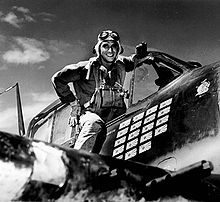 aircraft gunner who had fired at him, "Son, if you don't stop shooting at me when I've got my wheels down, I'm going to have to report you to the gunnery officer." aircraft gunner who had fired at him, "Son, if you don't stop shooting at me when I've got my wheels down, I'm going to have to report you to the gunnery officer." Thach calculated that O'Hare had used only sixty rounds of ammunition for each bomber he destroyed; an impressive feat of marksmanship. In the opinion of Admiral Brown and of Captain Frederick C. Sherman, commanding the Lexington, Lieutenant O'Hare's actions may have saved the carrier from serious damage or even loss. By 1900 all Lexington planes had been recovered except for two F4F-3 Wildcats shot down while attacking enemy bombers; both were lost while making steady, no-deflection runs from astern of their targets. The pilot of one fighter was rescued, the other went down with his aircraft. The Lexington returned after the New Guinea raid to Pearl Harbor for repairs and to have her obsolete 8-inch guns removed, transferring some of her F4F-3 fighter planes to the USS Yorktown (CV-5) including BuNo 4031 "White F-15" that O'Hare had flown during his famous mission. The pilot assigned to fly this aircraft to Yorktown was admonished by O'Hare just before take off to take good care of his plane. Moments later, the fighter unsuccessfully took off, rolling down the deck and into the water; the pilot was recovered, but "White F-15" was lost. |
| On March 26, Butch was greeted at Pearl Harbor by a horde of reporters and radio announcers. During a radio broadcast in Honolulu, he enjoyed the opportunity to say hello to Rita ("Here's a great big radio hug, the best I can do under the circumstances") and to his mother ("Love from me to you"). On April 8, he thanked the Grumman Aircraft Corporation plant at Bethpage (where the F4F Wildcat was made) for 1,150 cartons of Lucky Strike cigarettes, a grand total of 230,000 smokes. Ecstatic Grumman workers had passed the hat to buy the cigarettes in appreciation of O'Hare's combat victories in one of their F4F Wildcats. A loyal Camel smoker, Butch opened a carton, deciding that it was the least he could do for the good people back in Bethpage. In his letter to the Grumman employees he wrote, "You build them, we'll fly them and between us, we can't be beaten." It was a sentiment he would voice often in the following two months. By shooting down five bombers O'Hare became a flying ace, was selected for promotion to Lieutenant Commander, and became the first naval aviator to receive the Medal of Honor. With President Franklin D. Roosevelt looking on, O'Hare's wife Rita placed the Medal around his neck. After receiving the Medal of Honor from President Franklin D. Roosevelt, then-LT O'Hare was described as "modest, inarticulate, humorous, terribly nice and more than a little embarrassed by the whole thing". O'Hare received further decorations later in 1943 for actions in battles near Marcus Island in August and subsequent missions near Wake Island in October. O'Hare was not employed on combat duty from early 1942 until late 1943. Important events in this period included flying an F4F-3A Wildcat (BuNo 3986 "White F-13") as Lieutenant Commander Jimmy Thach's wingman for publicity footage on April 11, 1942, the Medal of Honor presentation at the White House on April 21, and the welcome parade in O'Hare's hometown on Saturday, April 25, 1942. The welcome parade was held in St. Louis. At the starting point, O'Hare, wearing the impressive blue-ribboned Medal of Honor around his neck, was guided to the back seat of a black open Packard Phaeton, where he sat between his wife Rita and his mother Selma. The parade began at noon, led by a police motorcycle escort, then came the band from Jefferson Barracks, marching veterans, a truck packed with photographers, O'Hare's Phaeton (with a six-man Marine honor guard alongside) and other open cars. Bringing up the rear was the entire 350-member student body of Western Military Academy. St. Louis Mayor William Dee Becker presented O'Hare with a gold navigator's four-dial watch engraved with the words "To Lt. Commander Edward H. O'Hare, USN, from a proud and grateful City of St. Louis, April 25, 1942". As Butch O'Hare's mother and his sisters clipped newspaper stories and photos the following days, his place in history began to dawn on them. A newspaper headline read, "60,000 give O'Hare a hero's welcome here." The United States in 1942 badly needed a live hero, and Butch O'Hare was a young, handsome naval aviator, so he participated in several war bond tours the following months. On June 19, 1942 O'Hare assumed command of VF-3, relieving Lieutenant Commander Thach. He was relocated to Maui, Hawaii, to instruct other pilots in combat tactics. U.S. Navy policy was to use its best combat pilots to train newer pilots, in contrast to the Japanese practice of keeping their best pilots flying combat missions. Ensign Edward L. "Whitey" Feightner, who served with O'Hare in July 1942, later said that one of the best pieces of information O'Hare passed on to him, was "If you ever jump one of these Zeros and you surprise him, remember, the first thing he's going to do is a loop. Don't follow him into it! By the time you go into it a second time, he'll be behind you. The first thing you should do when he starts up the loop is make a hard right turn and keep turning. You'll come right around, and when he bottoms out of the loop, you'll be right on his tail!" O'Hare also related "First of all, remember, in today's world, whenever you take off and engage the enemy, you're going to be outnumbered. If you want to survive this War, you have to look behind you every chance you get. Even when you pull the trigger, be sure to look behind because there's gonna be someone back there." An anecdote about O'Hare, serving as an instructor on Hawaii mid-1942:
"(O'Hare) was a great swimmer and spear fisherman, and he insisted that the squadron swim with him. Swimming with Butch O'Hare meant that at eight o'clock in the morning, you swam out into the ocean off Maui; he would still be out there at three in the afternoon! If he got hungry, Butch would roll over and dive, and the next thing you knew, he would come up with a fish of some sort. Then he'd just roll over and lie on his back like an otter and eat the thing raw! He really impressed us with that! One day, he came back to the surface with an octopus draped over his arm. He said, 'Now, you have to learn how to kill these things, boys: you bite 'em right behind the eye.' And with that, he chomped down! The octopus has some sort of spinal cord there, and biting it there does kill it! Then we had to go back to the beach where Butch would put these things in a frying pan with a little oil and some salt and stir them around. He enjoyed them, but they tasted like old rubber tires to me!"
In March 2, 1943, Butch met Rita and hugged his one-month-old daughter, Kathleen, for the first time. His family resided in Coronado at 549 Orange Avenue, near North Island NAS. At the end of March 1943, O'Hare made Ensign Alexander Vraciu, a young Naval Reservist just out of flight school, his wingman. On July 15, 1943, VF-3 swapped designations with VF-6 squadron. |
Equipped with the highly successful follow-on to the Wildcat, the new Grumman F6F-3 Hellcat, two-thirds of VF-6 (twenty-four F6F-3s) under Butch O'Hare's  command embarked on August 22, 1943 on the light carrier USS Independence (CVL-22). The arrival of the F6Fs with their powerful Pratt & Whitney R-2800 radial engines in late 1943 combined with the deployment of the new Essex class carriers and the Independence class carriers immediately gave the U.S. Pacific Fleet air supremacy wherever the Fast Carrier Force operated. The Hellcat's first combat mission occurred on August 31, 1943, in a strike against Marcus Island. The F6F did well against Japanese fighters, and proved that with the right tactics and teamwork the Japanese Zero need not be considered a superior enemy. VF-6's combat debut command embarked on August 22, 1943 on the light carrier USS Independence (CVL-22). The arrival of the F6Fs with their powerful Pratt & Whitney R-2800 radial engines in late 1943 combined with the deployment of the new Essex class carriers and the Independence class carriers immediately gave the U.S. Pacific Fleet air supremacy wherever the Fast Carrier Force operated. The Hellcat's first combat mission occurred on August 31, 1943, in a strike against Marcus Island. The F6F did well against Japanese fighters, and proved that with the right tactics and teamwork the Japanese Zero need not be considered a superior enemy. VF-6's combat debut 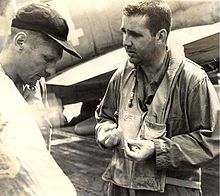 on the Independence also went reasonably well. For his actions in battles near Marcus Island on August 31, 1943, O'Hare was awarded the Distinguished Flying Cross. For his actions in subsequent missions near Wake Island on October 5, 1943, O'Hare was awarded a Gold Star in lieu of a second Distinguished Flying Cross. on the Independence also went reasonably well. For his actions in battles near Marcus Island on August 31, 1943, O'Hare was awarded the Distinguished Flying Cross. For his actions in subsequent missions near Wake Island on October 5, 1943, O'Hare was awarded a Gold Star in lieu of a second Distinguished Flying Cross.In October 10, 1943, O'Hare flew with VF-6 again in the air strikes against Wake Island. On this mission Lt.(jg) Alex Vraciu, the future ace, was his wingman - both Butch and Vraciu scored that day. When they came across an enemy formation Butch took the outside airplane and Vraciu took the inside plane. Butch went below the clouds to get a Japanese Mitsubishi Zero and Vraciu lost him, so Vraciu kept an eye on a second Zero that went to Wake Island and landed. Vraciu strafed the Zero on the ground, then saw a Betty bomber and shot it down. Upon returning to the carrier, O'Hare asked Vraciu where he went and Vraciu knew then that he should have definitely stayed with his leader. Alex Vraciu later told[29] after the war, "O'Hare taught many of the squadron members little things that would later save their lives. One example was to swivel your neck before starting a strafing run to make sure enemy fighters were not on your tail." Vraciu also learned from O'Hare the "highside pass" used for attacking the Japanese Mitsubishi Betty bombers. The highside technique was used to avoid the lethal 20-mm fire of the Betty's tail gunner. The Wake Island raid would be the last occasion Butch would lead VF-6 in battle. According to orders dated September 17, 1943, October found Butch O'Hare as Commander Air Group (CAG) commanding Air Group Six, embarked on USS Enterprise (CV-6). Functioning as CAG, O'Hare was given command of the entire Enterprise air group: F6F fighters, SBD Dauntless dive bombers, TBF Avenger torpedo planes and 100 pilots.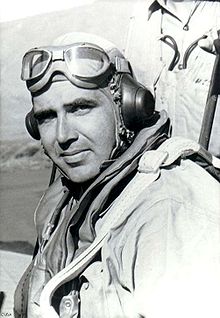 Now overseeing three squadrons, O'Hare still insisted that everyone call him "Butch." O'Hare's VF-6 squadron would "still stay broken up" among three light aircraft carriers, the squadron had made itself just too useful filling out the light carrier air groups, and AirPac had no well-trained replacements on hand. As a result, Fighting Squadron Two (VF-2) boarded the USS Enterprise from November 1943 and became Butch's new Fighting Squadron. While he readied his new air group, he suffered what he intended as only a temporary separation from his beloved VF-6 "Felix the Cat" Squadron. The news, that the CO had to leave them, hit also the men of VF-6 hard. O'Hare first flew a TBM-1 Avenger as CAG-6 command aircraft with bombardier Del Delchamps, AOM1/c and radioman Hal Coleman as crew members. With its good radio facilities, docile handling, and long range, the Grumman Avenger made an ideal command aircraft for Air Group Commanders (CAGs), but Butch considered the Grumman torpedo bomber as a 'lame turkey' compared to the Grumman F6F fighter. Later Rear Admiral Radford honored a request from O'Hare to take a fighter as command aircraft instead of the Avenger, so O'Hare in a fateful decision happily drew Grumman F6F-3 Hellcat Bureau Number 66168 from the fleet pool to become his principal CAG plane, numbered "00". From 20-November 23, 1943, the U.S. forces landed in the Gilberts (Tarawa and Makin), and the Enterprise joined in providing close air support to the Marines landing on Makin Island. Equipped with the Grumman F6F Hellcat, the U.S. Navy fighter pilots owned the skies and could protect the fleet from attacking Japanese aircraft. Mission into Darkness
Faced with U.S. daylight air superiority, the Japanese quickly developed tactics to send torpedo-armed Mitsubishi G4M Betty bombers on night missions from their bases in the Marianas against the U.S. aircraft carriers. In late November they launched these low-altitude strikes almost nightly to get at Enterprise and other American ships, so Rear Admiral Arthur W. Radford, O'Hare and Commander Tom Hamilton, CV-6 Air Officer, were deeply involved in developing ad hoc counter-tactics, the first carrier-based night fighter operations of the U.S. Navy. O'Hare's  plan required the Carrier's Fighter Director Officer (FDO) to spot incoming enemy formations at a distance and send a "Bat Team" section consisting of a TBF Avenger torpedo bomber and two F6F Hellcat fighters toward the Japanese intruders. Although improvements in new types of aviation radar were soon forthcoming from the engineers at MIT and the electronic industry, the available primitive radars in 1943 were very bulky, attributed to the fact that they contained vacuum tube technology. Radars were carried only on the roomy TBF Avengers, but not on the smaller and faster Hellcats, so the radar-equipped TBF Avenger would lead the Hellcats into position behind the incoming bombers, close enough for the F6F pilots to spot visually the blue exhaust flames of the Japanese bombers. Finally, the Hellcats would close in and shoot down the torpedo-carrying bombers. plan required the Carrier's Fighter Director Officer (FDO) to spot incoming enemy formations at a distance and send a "Bat Team" section consisting of a TBF Avenger torpedo bomber and two F6F Hellcat fighters toward the Japanese intruders. Although improvements in new types of aviation radar were soon forthcoming from the engineers at MIT and the electronic industry, the available primitive radars in 1943 were very bulky, attributed to the fact that they contained vacuum tube technology. Radars were carried only on the roomy TBF Avengers, but not on the smaller and faster Hellcats, so the radar-equipped TBF Avenger would lead the Hellcats into position behind the incoming bombers, close enough for the F6F pilots to spot visually the blue exhaust flames of the Japanese bombers. Finally, the Hellcats would close in and shoot down the torpedo-carrying bombers. One of the four 'Bat Team' fighter pilots to conduct this experimental night fighter operations to intercept and destroy enemy bombers attacking Allied landing forces was then-LT Roy Marlin Voris, who after the war founded and commanded the Navy's flight demonstration squadron, the Blue Angels. On the night of November 26, 1943, the Enterprise introduced the experiment in the co-operative control of Avengers and Hellcats for night fighting, when the three-plane team from the ship broke up a large group of land-based bombers attacking Task Group TG 50.2. O'Hare volunteered to lead this mission to conduct the first-ever Navy nighttime fighter attack from an aircraft carrier to intercept a large force of enemy torpedo bombers. When the call came to man the fighters, Butch O'Hare was eating. He grabbed up part of his supper in his fist and started running for the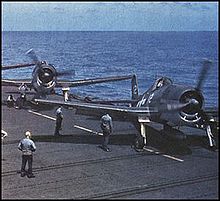 ready room. He was dressed in loose marine coveralls. The night fighter unit consisting of 1 VT and 2 VF was catapulted between 1758 and 1801. The pilots for this flight were Butch O'Hare and Ensign Warren Andrew "Andy" Skon of VF-2 in F6Fs and the Squadron Commander of VT-6, LCDR John C. Phillips in a TBF1-C. The crew of the TBF torpedo plane consisted of LTJG Hazen B. Rand, a radar specialist and Alvin Kernan, A. B., AOM1/c. The 'Black Panthers', as the night fighters were dubbed, took off before dusk and flew out into the incoming mass of Japanese planes. ready room. He was dressed in loose marine coveralls. The night fighter unit consisting of 1 VT and 2 VF was catapulted between 1758 and 1801. The pilots for this flight were Butch O'Hare and Ensign Warren Andrew "Andy" Skon of VF-2 in F6Fs and the Squadron Commander of VT-6, LCDR John C. Phillips in a TBF1-C. The crew of the TBF torpedo plane consisted of LTJG Hazen B. Rand, a radar specialist and Alvin Kernan, A. B., AOM1/c. The 'Black Panthers', as the night fighters were dubbed, took off before dusk and flew out into the incoming mass of Japanese planes. Confusion and complications endangered the success of the mission. The Hellcats first had trouble finding the Avenger, the FDO had difficulty guiding any of them on the targets. O'Hare and Ensign W. Skon in their F6F Hellcats finally got into position behind the Avenger. Butch O'Hare had been well aware of the deadly danger of friendly fire in this situation - he radioed to the Avenger Pilot of his section, "Hey, Phil, turn those running lights on. I want to be sure it's a yellow devil I'm drilling." O'Hare was last seen at the 5 o'clock position of the TBF. About that time, the turret gunner of the TBF, Alvin Kernan (AOM1/c) noticed a Japanese G4M Betty bomber above and almost directly behind O'Hare's 6 o'clock position. Kernan opened fire with the TBF's .50-cal. machine gun in the dorsal turret and a Japanese gunner fired back. Butch O'Hare's F6F Hellcat apparently was caught in a crossfire. Seconds later Butch's F6F slid out of formation to port, pushing slightly ahead at about 160 knots and then vanished in the dark. The Avenger pilot, Lieutenant Commander Phillips, called repeatedly to O'Hare but received no reply. Ensign Skon responded: "Mr. Phillips, this is Skon. I saw Mr. O'Hare's lights go out and, at the same instant, he seemed to veer off and slant down into darkness." Phillips later asserted, as the Hellcat dropped out of view, it seemed to release something drop almost vertically at a speed too slow for anything but a parachute. Then something "whitish-gray" appeared below, perhaps the splash of the aircraft plunging into the sea. Lieutenant Commander Phillips reported the position ( 1°26′0″N 171°56′0″W / 1.433333°N 171.933333°W / 1.433333; -171.933333 (Place where O'hare's aircraft went down.)) to the ship. After dawn a three-plane search was made, but no trace of O'Hare or his aircraft was found. On November 29 a PBY Catalina flying boat also conducted a search with no positive result, and O'Hare was reported missing in action. 1°26′0″N 171°56′0″W / 1.433333°N 171.933333°W / 1.433333; -171.933333 (Place where O'hare's aircraft went down.)) to the ship. After dawn a three-plane search was made, but no trace of O'Hare or his aircraft was found. On November 29 a PBY Catalina flying boat also conducted a search with no positive result, and O'Hare was reported missing in action. For 54 years there was no definitive answer as to whether he had been brought down by friendly fire or the Japanese bomber's nose gunner. In 1997 the publication of the primary source for this article, Fateful Rendezvous: The Life of Butch O'Hare, by Steve Ewing and John B. Lundstrom (see References below) shed new light. Ewing and Lundstrom very clearly state, more than once, that Japanese guns, and not Kernan's, killed Butch O'Hare. In Chapter 16, "What Happened to Butch," the authors write, "Butch fell to his old familiar adversary, a Betty. Most likely he died from, or was immediately disabled by, a lucky shot from the forward observer crouched in the rikko's [Betty's] forward glassed-in nose...the nose gunner's 7.7mm slugs very likely penetrated Butch's cockpit from above on the port side and ahead of the F6F's armor plate." In the Index, Ewing and Lundstrom flatly state that Kernan is "wrongly accused of shooting down Butch." Why the confusion for so many years? Ewing and Lundstrom point out that the "most influential and oft-cited" account of O'Hare's last mission came in a 1962 history of the Enterprise by CDR Edward P. Stafford, which relied on action reports and recollections of former Enterprise crew, but did not contain interviews with any of the living participants. By contrast, Ewing and Lundstrom came to their conclusions on what happened to Butch after interviewing the still living survivors of O’Hare’s last mission: F6F pilot Skon, TBF radar officer Rand, and TBF gunner Kernan. Ewing and Lundstrom write, "Through Stafford and other accounts based largely on the action reports, Butch has wrongly become known as one of America's most famous "friendly fire" casualties." On December 9, official word arrived that O'Hare was missing in action. His mother Selma left for San Diego to be with his wife Rita and his daughter Kathleen. LCDR Bob Jackson wrote Rita O'Hare from the Enterprise to describe the extensive but unsuccessful search for her husband. In the letter, LCDR Jackson quoted RADM Arthur W. Radford saying of Butch O'Hare that he "never saw one individual so universally liked." The hardest thing O'Hare's former wingman LT Alex Vraciu had to do was to talk to O'Hare's wife Rita after returning stateside. On December 20, 1943, a Solemn Pontifical Mass of Requiem was offered for Butch O'Hare at the St. Louis Cathedral. As O'Hare went missing on November 26, 1943, and was declared dead a year later, his widow Rita received her husband's posthumous decorations, a Purple Heart and the Navy Cross on November 26, 1944. |
| Medal of Honor Citation: 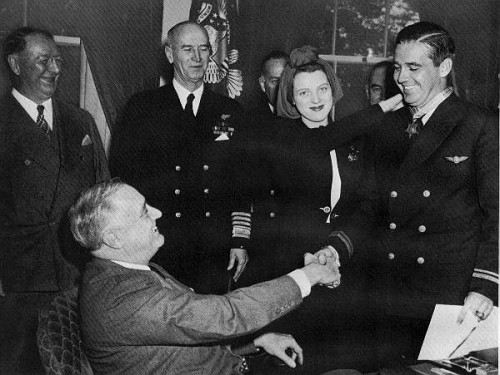
For conspicuous gallantry and intrepidity in aerial combat, at grave risk of his life above and beyond the call of duty, as section leader and pilot of Fighting Squadron 3 on February 20, 1942. Having lost the assistance of his teammates, Lieutenant O'Hare interposed his fighter between his ship and an advancing enemy formation of 9 attacking twin-engine heavy bombers. Without hesitation, alone and unaided, he repeatedly attacked this enemy formation, at close range in the face of intense combined machine gun and cannon fire. Despite this concentrated opposition, Lieutenant O'Hare, by his gallant and courageous action, his extremely skillful marksmanship in making the most of every shot of his limited amount of ammunition, shot down 5 enemy bombers and severely damaged a sixth before they reached the bomb release point. As a result of his gallant action—one of the most daring, if not the most daring, single action in the history of combat aviation—he undoubtedly saved his carrier from serious damage |
| Please remember the Canteen is here to honor, support and entertain our troops and their families. This is a politics-free zone! Thanks for helping us in our mission! |
|





















